Mushroom-mushroom Lamp was a part of the Dreamfungi project which is a grassroots innovation project to locally research, develop and produce a biocomposite material using mycelium as an alternative sustainable material for packaging, construction, apparel and accessories industries.

Mushroom made out of mushroom (mycelium) material was just a thought that came out from delegates Dinacon 2022 at DreamSpace BioLab. By the time this idea came in Cris and Pramo already figured out how to make mycelium biocomposites with locally available biomass and fungi.
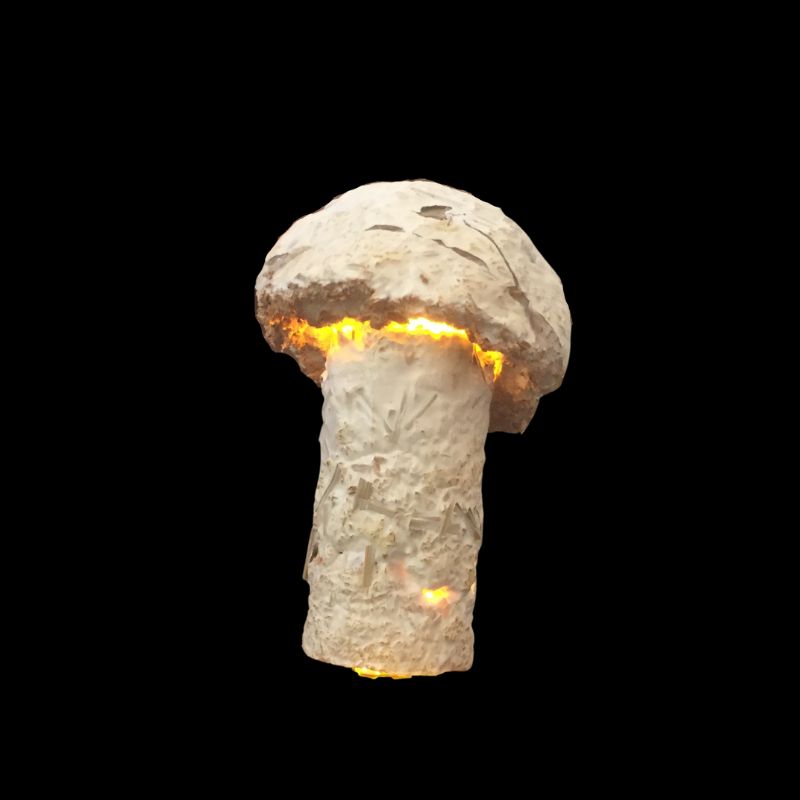
Contributors: Cristian Silva (Cris), Pramodya Saumyamali (Pramo), Brian Huang and Tali
How did we make a Lamp?
Making molds for the lamp
Tali and Pramo wanted to make the molds quickly with coconut shells (the cap of the mushroom) and cardboard roll (the stem of the mushroom). A PVC pipe was put inside the cardboard roll to make space for light and wire to go inside the mushroom stem.
Bio fabrication of mushroom lamp
Cris did the mycelium fabrication of the lamp with molds made by Pramo and Tali. He used Ganoderma fungi to make mushroom lamps with sawdust. After 5 days he took mycelium material out of the molds and let it grow for another few days in a growth chamber. After leaving the mushroom lamp in the growth container it got the distinct colour and texture of mycelium material.
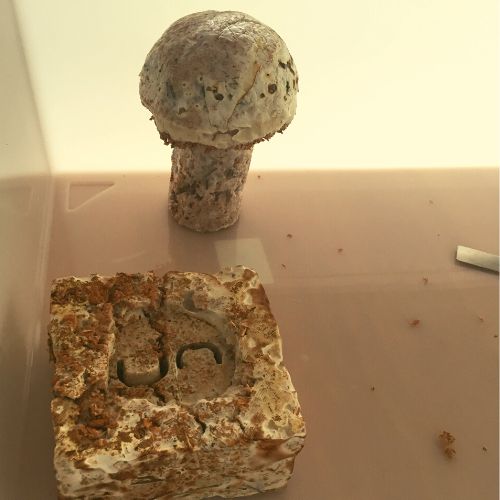
Adding the lights for the lamp
Brian made and gave one of his LED lights from the AnyLamp project. The light was set up at the bottom of the mushroom stem.
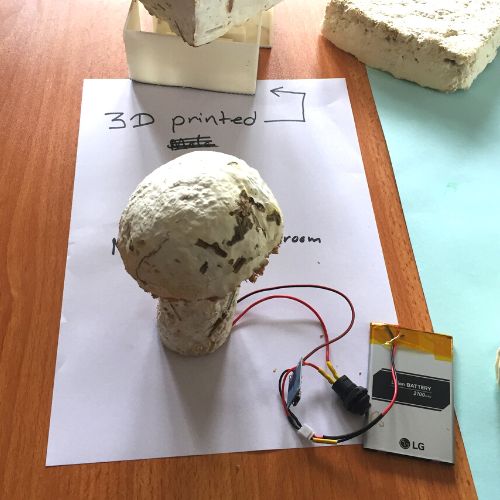
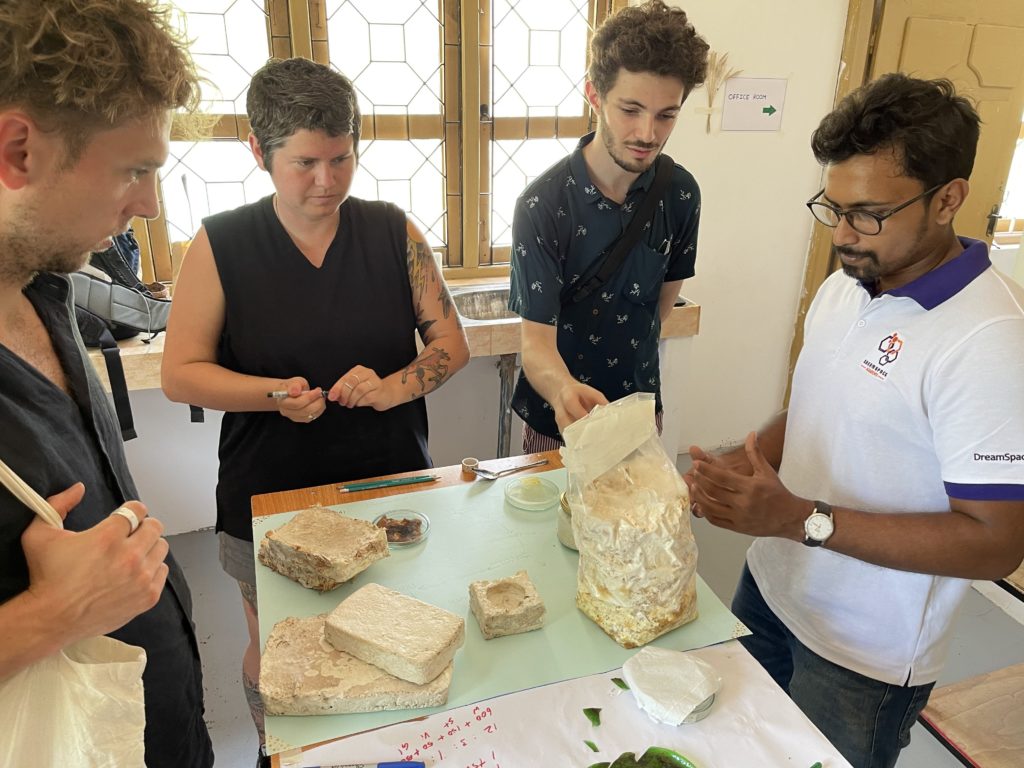
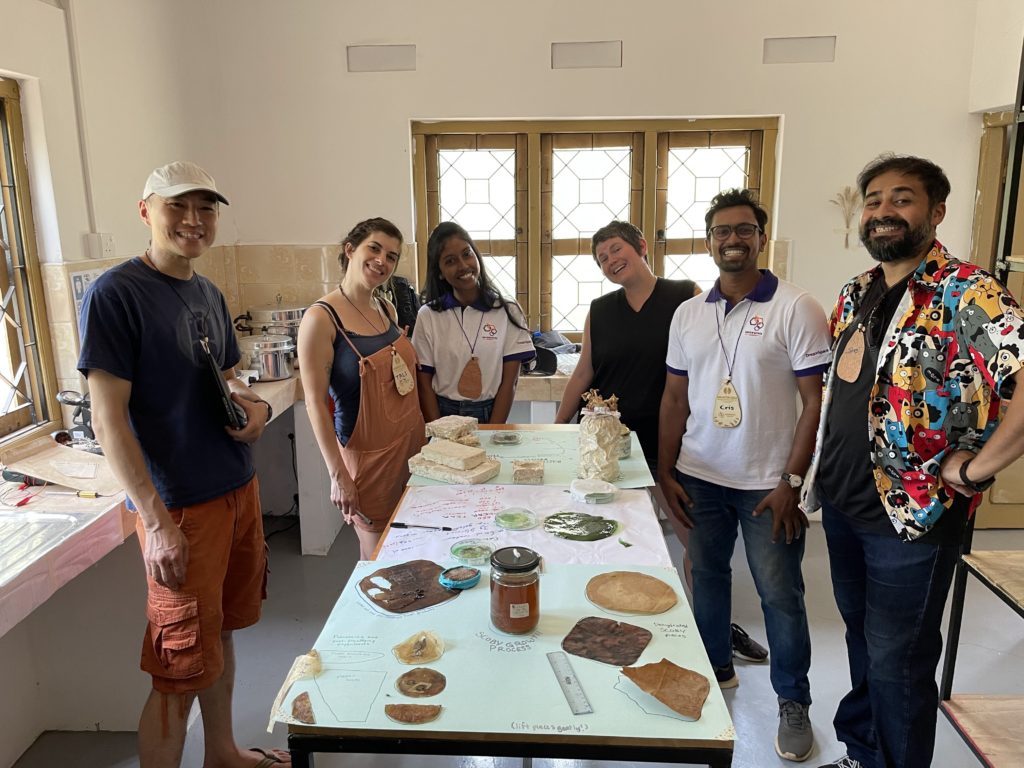
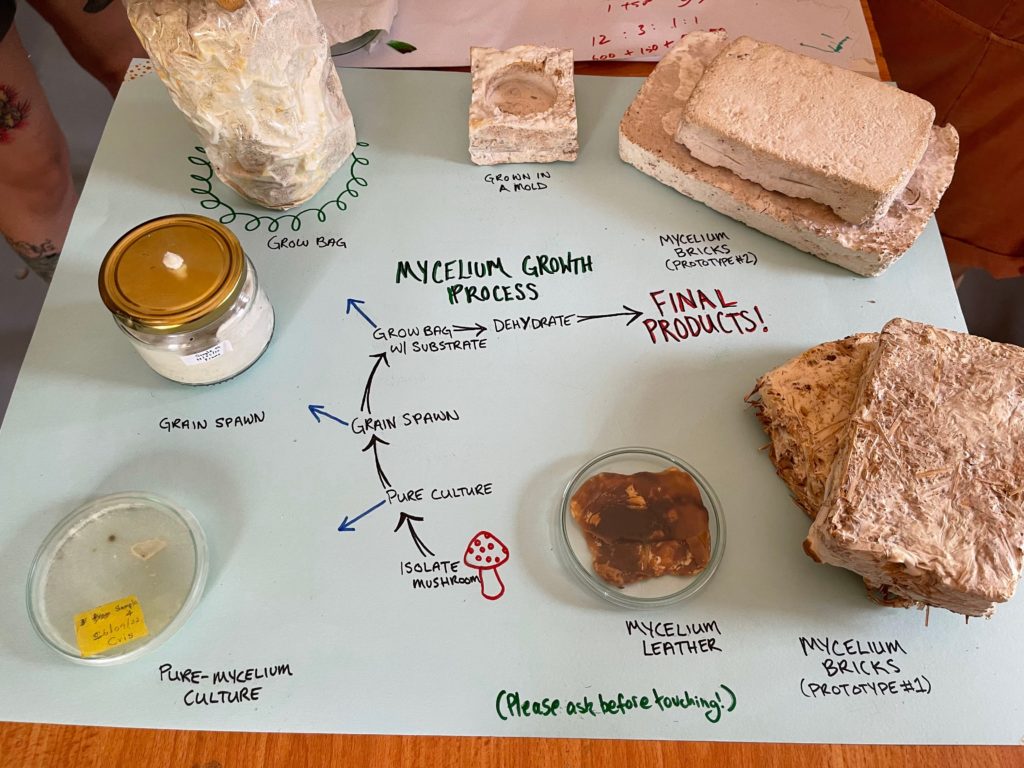
The Fluffynator – side project
Contributors – Cristian Silva (Cris), Brian Huang, Saad Chinoy, Marc Juul
Fluffynator is an old aroma therapy humidifier turned into an automated humidifier for making mushroom objects like the mushroom-mushroom lamp. It facilitates mycelium mat growth on top of the biomass once it is taken out of the mold and placed in the growth chamber. Arduino Uno, a temperature and humidity sensor (DHT11), LED screen and a switch were used to make the whole hack works with an old humidifier.


How it works:
The humidifier has five modes and the last mode is the off mode. The humidifier previously had a touch sensor which was damaged and rusted. It used to be the switch that turns off the humidifier or the change modes. We removed the rusted sensor and connect it to Arduino with a wire. Arduino can change the modes with electric pulses to the IC of the old humidifier. We then add a new switch to Arduino to change the mode to off mode before Arduino Uno and the humidity sensor starts taking measure measurements (every time when we turn on the humidifier by giving it power, we have to press the switch and make sure the humidifier is off (then everything is in synch!). When humidity is above 70% Arduino sends 5 eclectic pulses to the humidifier to shift through different modes and finally to the off mode. Once humidity is below 70% it again gives a pulse to turn the humidifier on. In this way, fluffynator maintains the humidity inside the mycelium material growth chamber without manual interventions.

